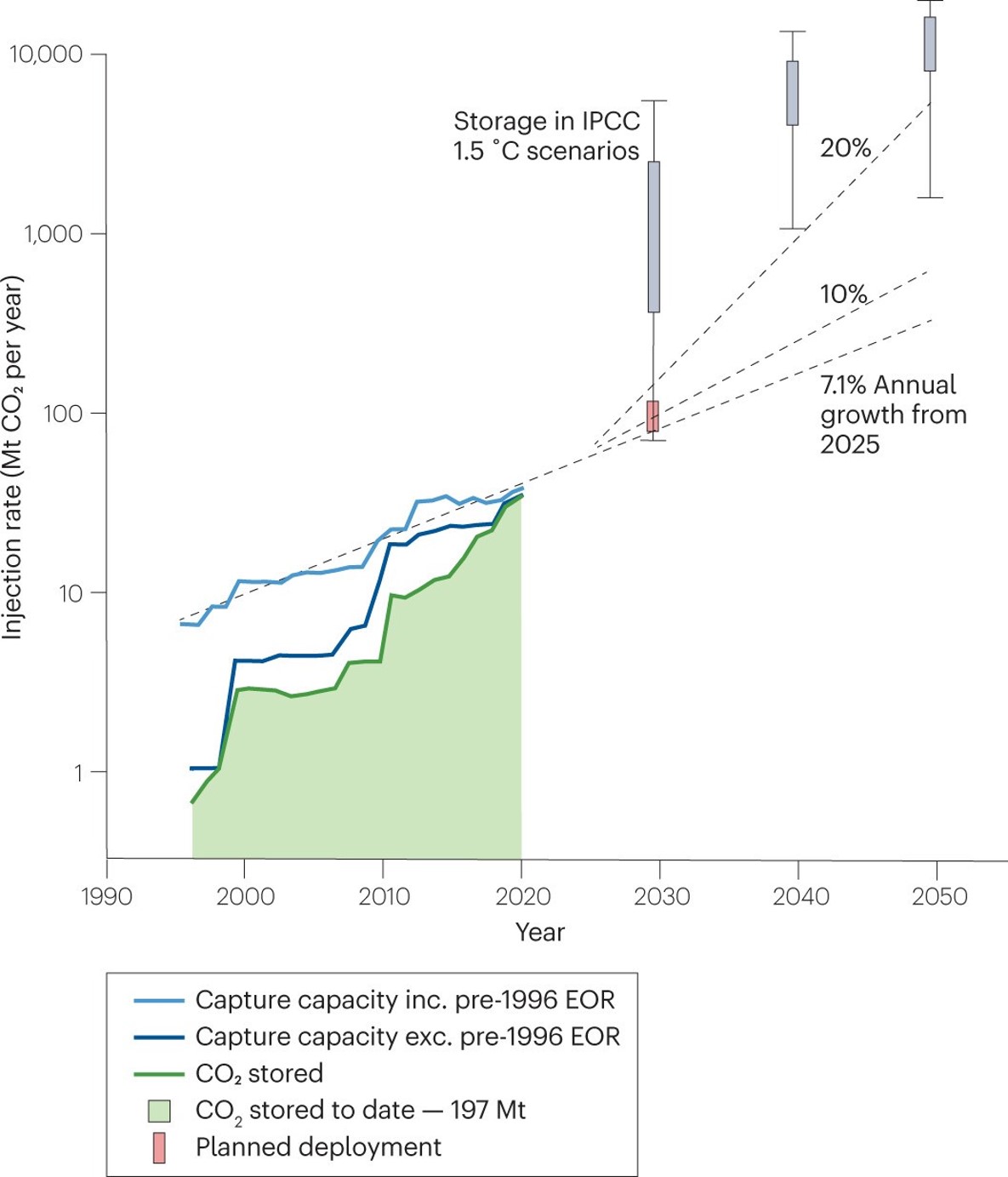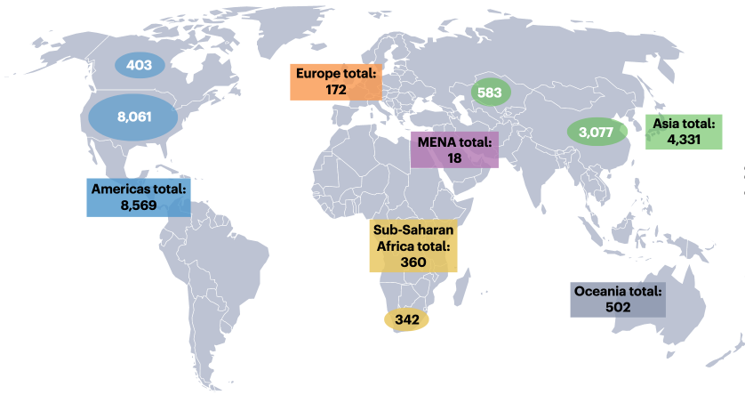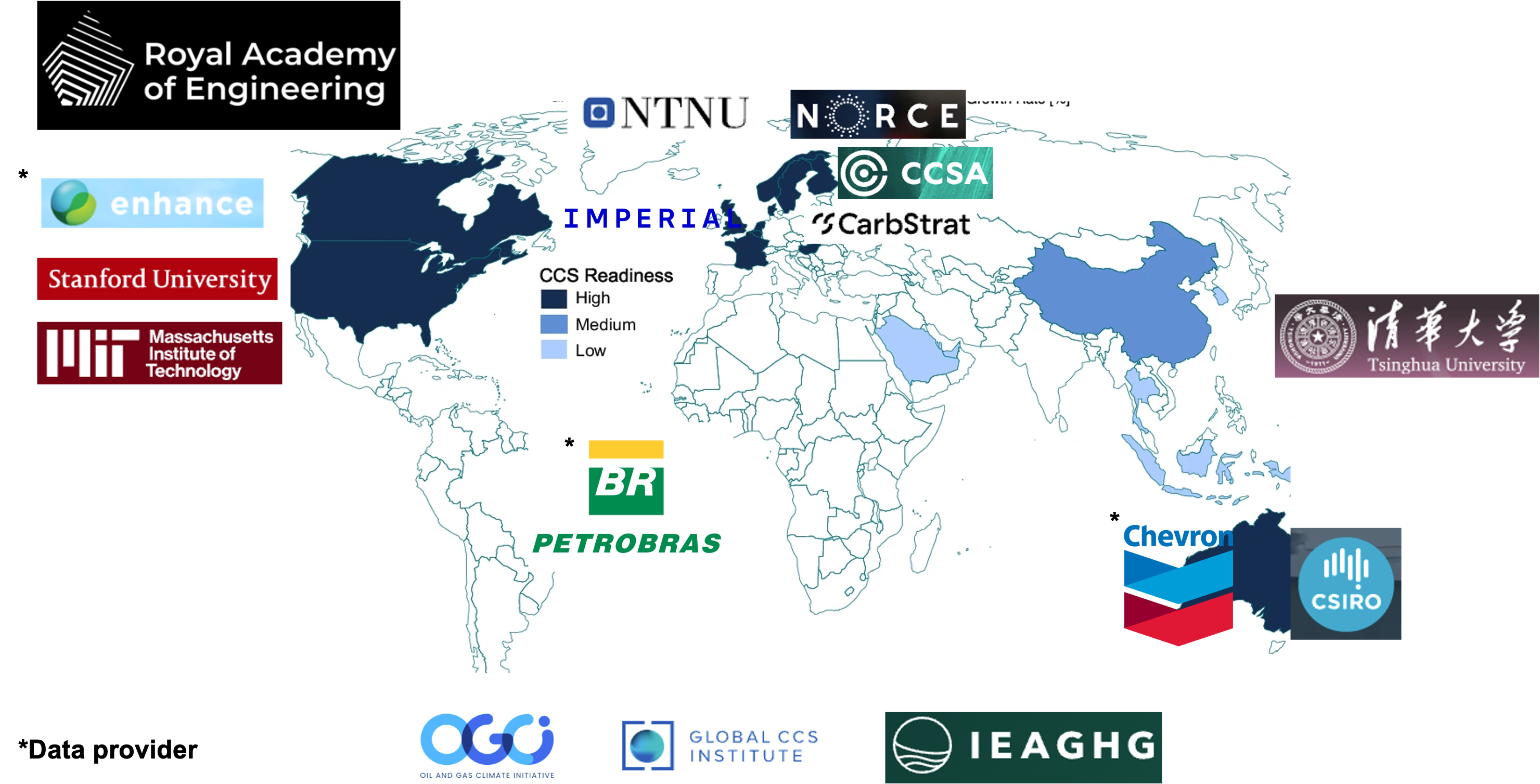This is a centralised register of annual rates of CO₂ stored underground from operational projects worldwide. This initiative, funded by the UK Royal Academy of Engineers and supported by a consortium of stakeholders from academia, industry, and government, obtains data directly from operators as well as from publicly available information, providing a standardised register of the annual amounts of stored CO₂.
Due to the importance of carbon capture and storage (CCS) in modelled climate mitigation pathways, the feasibility of achieving these rates by mid-century is central to our understanding of the potential to avoid dangerous climate change (Figure 1). With increasing numbers of industry-scale storage projects operating around the world, data through which project performance, and scale-up potential, may be evaluated are becoming available.
Most operating CCS project chains publicly report their achieved rates of capture, transport, and storage (Figure 2 ). However, these data are reported via a wide variety of outlets ranging from governmental databases to company press releases. The variation in the reporting avenues, time periods, information type, and quality assurance creates challenges in both accessing information and analysing data across projects.
A centralised register of self-consistent information on annual storage performance will have many beneficiaries. Carbon storage project operators will benefit from visibility and clarity on their project performance. Investors and the business sector will benefit from increased confidence in the technology as a climate change solution and a viable business with compliance. Policy makers and the publics require this information to evaluate current and potential climate change mitigation provided by underground carbon storage.


The challenges in this project
- There is no central source of data on annual amounts of CO₂ storage that have been achieved. Although the data for individual projects is widely available in the public domain, the diversity in reporting, time periods, and assurance poses significant challenges in comparing data across projects
- Carbon capture and storage is making a significant climate change mitigation impact now, but this can only be rigorously quantified with information about annual amounts of CO₂ stored globally
- A rigorous time-series dataset capturing development over the coming decade will also enable the use of powerful growth modelling frameworks for forward predictions of CCS deployment. If not started now, this opportunity will be lost
Seeking stakeholder partners
We are still seeking stakeholder partners for in-kind participation in this project. The participation requires contributing data (as an operator), discussing the questions for the annual survey, and reviewing the annual report prior to publication. Please go to 'Contact Us' for more contact information.
Benefits to consortium stakeholders
- Gaining visibility and clarity on contributions to climate change mitigation happening today
- Eliminating the undue scepticism gap that currently exists about differences between capture capacity and actual amounts of CO₂ stored
- Create a powerful indicator of growth in CCS enhancing confidence as a viable business and climate change mitigation solution
- Generate the “Keeling Curve” of CCS a major opportunity to capture the rapid growth in CO₂ storage over the coming decade, enabling us to move from projections to predictive models of future deployment
- Transparent, publicly available, assured third-party data compilation already funded for the next four years to demonstrate and establish this registry
Team
Web development
Partners
This initiative, funded by the UK Royal Academy of Engineers, and supported by a global consortium of stakeholders from academia, industry, and government obtains data directly from operators, and publicly available information, providing a standardised register of annual stored amounts of CO₂. (The * represents the data providers only.)

References
Contact Us
We are still seeking stakeholder partners for in-kind participation in this project.
Please reach out to set up a call and discuss the project scope in further detail. Your consideration of this initiative is highly appreciated.